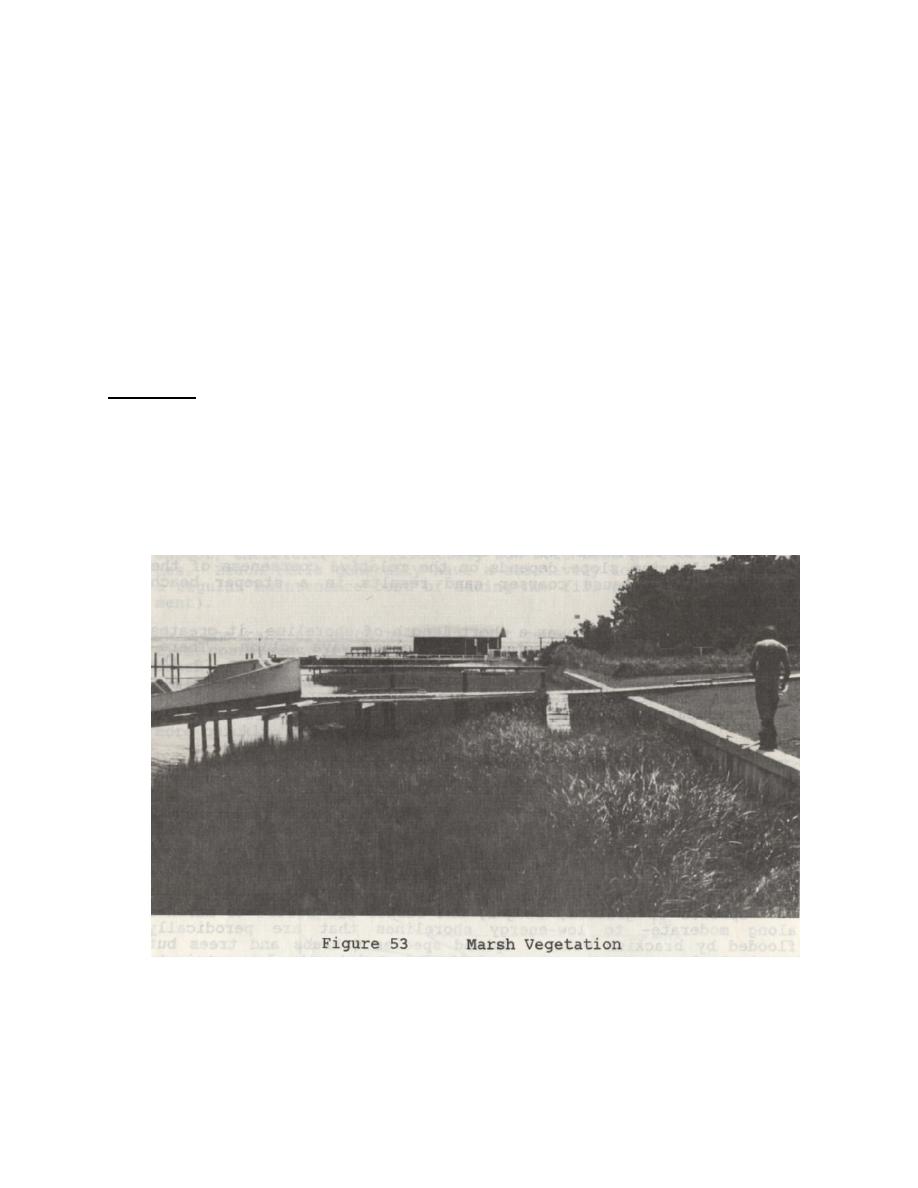
Species of grasses, sedges, and rushes are suited to marshes along moderate- to low-energy
shorelines that are periodically flooded by brackish water. Upland species (shrubs and trees but
particularly grasses) are especially adapted to the low-nutrient, low-moisture environment of the higher
beach elevations, where they are subject to abrasion by wind-blown sand particles. Used to trap sand and
stabilize the beach, upland vegetation also improves the beauty of a shoreline, prevents erosion by
intercepting raindrops, diminishes the velocity of overland flow, increases the soils infiltration rate, and
provides a habitat for wildlife.
Even though vegetation provides significant help in stabilizing slopes and preventing erosion,
vegetation alone cannot prevent erosion from heavy wave action, nor prevent movement of shoreline
bluffs activated by groundwater action. In these instances, structural devices augmented with vegetation
are recommended.
Marsh Plants
Coastal marshes are those herbaceous plant communities, which are normally inundated or
saturated by surface or groundwater. They may be narrow fringes along steep shorelines or they may
cover wide areas in shallow, gently sloping shore regions typically found in bays and estuaries (Figure
53). In saltwater marshes, salinity is generally equal to, or slightly less than, seawater (35 parts per
thousand salt). Freshwater marshes experience water level fluctuations resulting from groundwater table
and seasonal climatic changes.
To establish a coastal marsh, the site must be evaluated based on geographic area, tidal elevation
59



 Previous Page
Previous Page
